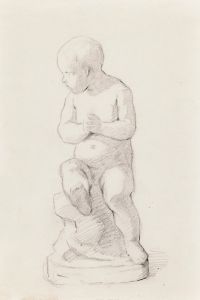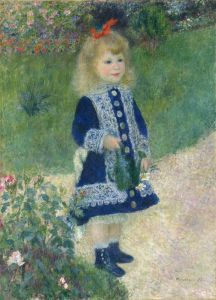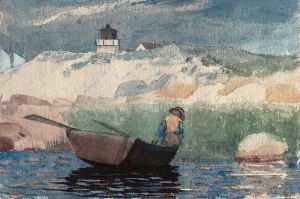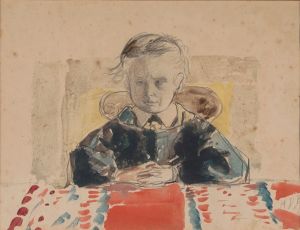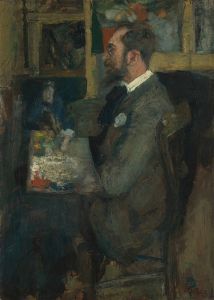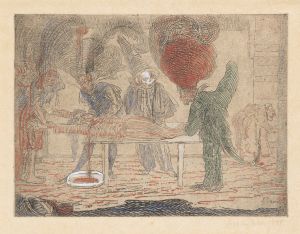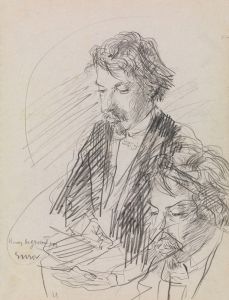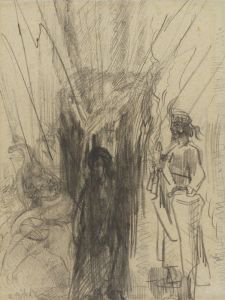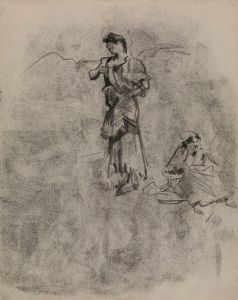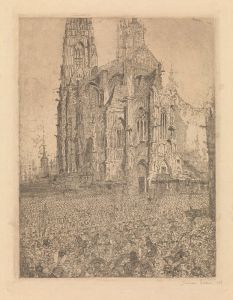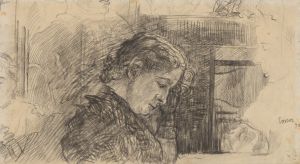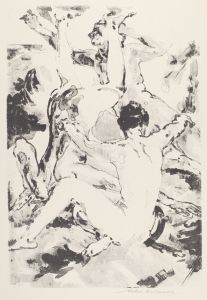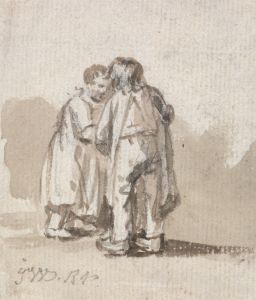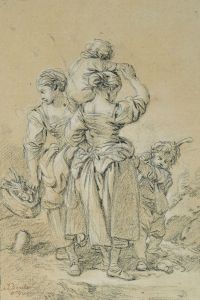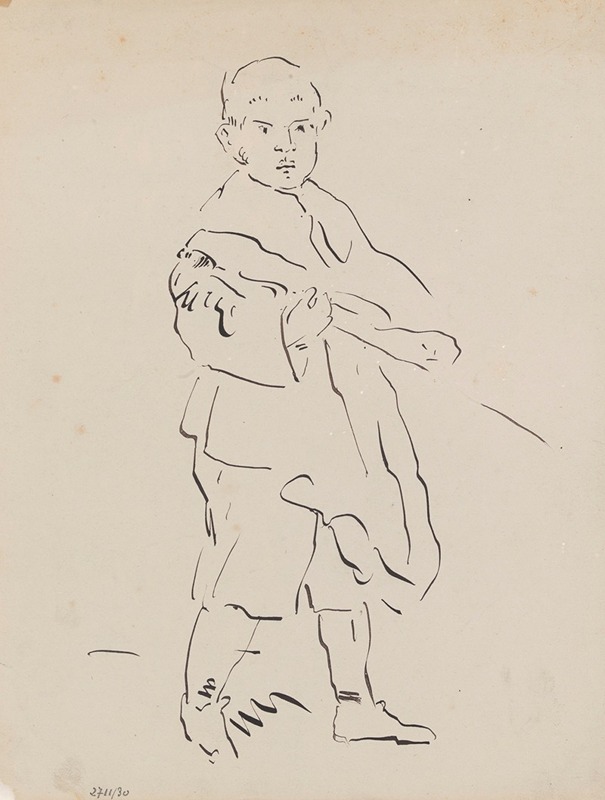
Boy with Sword
A hand-painted replica of James Ensor’s masterpiece Boy with Sword, meticulously crafted by professional artists to capture the true essence of the original. Each piece is created with museum-quality canvas and rare mineral pigments, carefully painted by experienced artists with delicate brushstrokes and rich, layered colors to perfectly recreate the texture of the original artwork. Unlike machine-printed reproductions, this hand-painted version brings the painting to life, infused with the artist’s emotions and skill in every stroke. Whether for personal collection or home decoration, it instantly elevates the artistic atmosphere of any space.
"Boy with Sword" is a painting by the Belgian artist James Ensor, created in 1889. Ensor, born in 1860 in Ostend, Belgium, is known for his unique style that often blends elements of realism with fantastical and grotesque imagery. He was a pivotal figure in the transition from the 19th-century artistic traditions to the modernist movements of the 20th century.
The painting "Boy with Sword" depicts a young boy holding a sword, a subject that may seem straightforward but is imbued with Ensor's characteristic complexity and depth. The boy is dressed in a costume that suggests a theatrical or historical context, which is a common theme in Ensor's work. His paintings often explore themes of performance, disguise, and the interplay between reality and illusion.
Ensor's use of color and light in "Boy with Sword" is notable. The painting exhibits his skillful application of vibrant colors and dramatic contrasts, which contribute to the emotional intensity of the piece. The boy's expression and posture convey a sense of seriousness and determination, inviting viewers to ponder the narrative behind the image. Ensor's brushwork is both precise and expressive, capturing the textures of the boy's costume and the gleam of the sword.
The painting reflects Ensor's interest in exploring the human condition and societal norms. During the late 19th century, Belgium was experiencing significant social and political changes, and artists like Ensor were responding to these shifts through their work. Ensor's paintings often critique societal conventions and question the nature of identity and authority, themes that can be subtly discerned in "Boy with Sword."
Ensor was associated with the avant-garde group Les XX (The Twenty), which was founded in Brussels in 1883. This group of artists and designers sought to challenge the conservative art establishment and promote innovative artistic expressions. Ensor's involvement with Les XX provided him with a platform to exhibit his work and connect with other progressive artists of his time.
"Boy with Sword" is part of Ensor's broader oeuvre that includes a wide range of subjects, from still lifes and landscapes to more fantastical and satirical compositions. His work has been influential in the development of expressionism and surrealism, and he is often regarded as a precursor to these movements.
Today, James Ensor's paintings, including "Boy with Sword," are celebrated for their originality and psychological depth. His ability to blend realism with imaginative elements has earned him a lasting place in the history of art. Ensor's work continues to be studied and appreciated for its innovative approach and its insightful commentary on the human experience.





